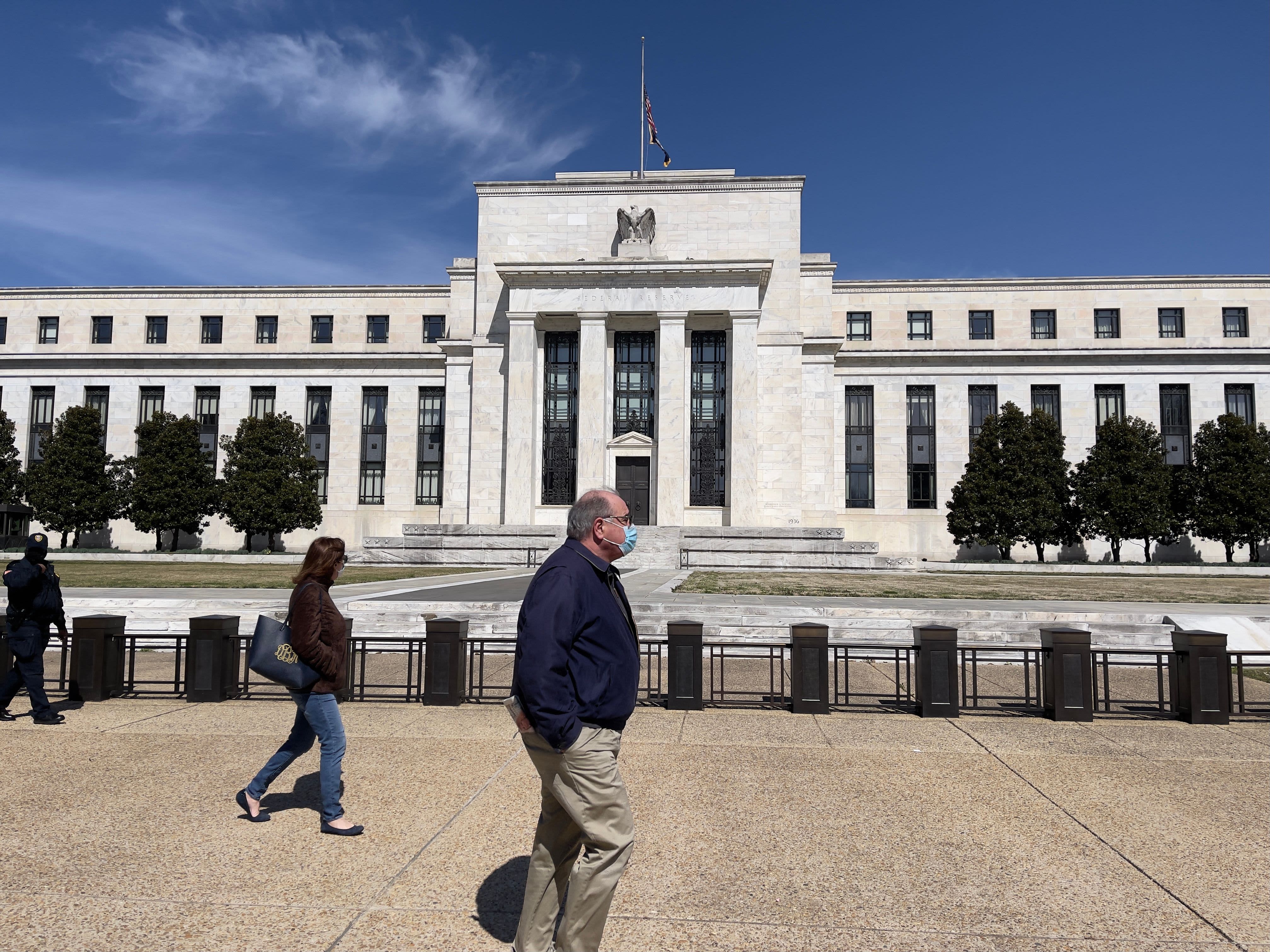The Federal Reserve said Wednesday it will keep its benchmark interest rate near zero despite signs the economic recovery is well underway.
But it’s clear rates won’t stay near rock-bottom forever. Recent data showing higher consumer prices and lower unemployment will pave the way for unwinding last year’s bond buying and near-zero interest rates.
“Being 7.8 million jobs short of pre-pandemic levels and with 9.3 million workers counted as unemployed gives the Fed air cover to maintain stimulus and hold off any outward discussions of tapering their bond purchases,” said Greg McBride, chief financial analyst at Bankrate.com.
“Even without talking about it publicly, behind closed doors it is bound to be a hot topic of discussion.”
More from Personal Finance:
Americans’ inflation fears reach a fever pitch
Here are the best ways to tap your home for cash
Why inflation is both good and bad for your wallet
Although the federal funds rate, which is what banks charge one another for short-term borrowing, is not the rate that consumers pay, the Fed’s moves still affect the borrowing and saving rates they see every day.
The Fed’s historically low borrowing rates makes it easier to borrow money — while also making it less desirable to hoard cash.
Here’s how consumers can still take advantage of these policies while they last.
Tips for borrowers
For starters, soaring home prices have resulted in a record amount of home equity on hand, which gives homeowners an unparalleled opportunity to refinance or take some money out of their houses at record-low rates.
Currently, the average 30-year fixed-rate home mortgage, which is generally pegged to yields on U.S. Treasury notes, is 3.13%, even lower than it’s been in recent weeks, according to Bankrate.
Once the Fed starts to slow the pace of bond purchases, however, long-term fixed mortgage rates will inevitably move higher, since they are also influenced by the economy and inflation.
“Mortgage rates have pulled back from levels seen earlier in the spring, making now an opportune time to refinance for those that haven’t yet gotten around to it,” McBride said.
“You can still lock in rates well below 3% and that can free up some valuable breathing room in the household budget at a time when many other costs are on the rise,” he added.
Alternatively, use a home equity loan or cash-out refinance to pay off other debt, advised Tendayi Kapfidze, chief economist at LendingTree, an online loan marketplace.
“You may significantly lower your overall debt costs,” Kapfidze said.
For those with credit card debt but no home equity, ”consider switching to a lower-cost loan, such as using a personal loan to consolidate and pay off high-interest credit cards,” Kapfidze advised.
The average interest rate on a personal loan is currently about 10.49%, “but those with good credit can find rates in the mid-single digits,” McBride said. Compare that to variable credit card rates, which stand near 16%, on average, according to Bankrate.
Alternatively, look around for a zero-interest balance transfer offer.
“Banks are itching to lend again, and we’ve seen a massive escalation in credit card reward offers in recent weeks as a result,” said Matt Schulz, LendingTree’s chief credit analyst.
“That makes it a really good time to shop around for a new card,” Schulz said.
When it comes to college debt, students borrowers already got a break thanks to the CARES Act, which paused federal student loan repayment through September.
Still, this is a great time to stay up-to-date on payments, McBride said. “With no interest being charged, every dollar is going toward paying down the balance.”
Advice for savers
Anyone stashing cash will have a harder time leveraging low interest rates to their advantage.
Although the Fed has no direct influence on deposit rates, those tend to be correlated to changes in the target federal funds rate, and, as a result, savers are earning next to nothing on their cash.
The average savings account rate is a mere 0.06%, or even less, at some of the largest retail banks, according to the Federal Deposit Insurance Corp.
Even a certificate of deposit won’t offer a decent return. Currently, one-year CD rates are averaging under 0.5%, which means savers are locking in funds below the rate of inflation and getting nearly nothing back.
For now, online-only banks such as Marcus by Goldman Sachs and Ally Bank are a better bet, according to Ken Tumin, founder of DepositAccounts.com, although those banks have steadily lowered their deposit rates, as well.
Stocks and mutual funds will beat inflation over the long haul, but that will require taking on more risk and having less cash on hand.
